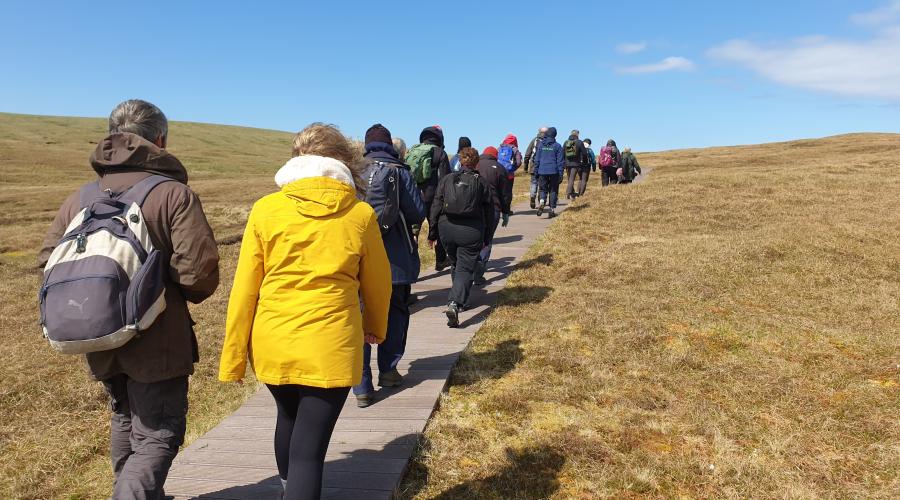
Record number of visitors to Shetland National Nature Reserve
18 December 2023
Hermaness National Nature Reserve (NNR) welcomed a record number of visitors in 2023 following an extensive upgrade of facilities last year.
Around 12,000 people visited Britain’s most northerly NNR where the new boardwalk, information hub and visitor shelter have been proving popular.
At Noss NNR, the ferry service returned to normal following Covid and avian flu restrictions over the past three years, with almost 1,600 people ferried across Noss Sound.
Following a difficult year in 2022, when avian flu swept through Shetland’s great skua (bonxie) and gannet colonies, NatureScot reserve staff were relieved that no bonxies and only one gannet were recorded with bird flu in 2023.
However, a census carried out at Hermaness and Noss NNRs revealed the ongoing impact of the 2022 outbreak. Bonxies, for which Shetland is a global stronghold, were down by 85% at Noss and 78% at Hermaness, with declines in gannets of 37% at Hermaness and 10% at Noss.
Juan Brown, NatureScot Operations Officer in Shetland, said: “Thankfully we did not see a repeat of the avian flu outbreaks of recent years in 2023, but our census demonstrates the toll the virus has taken on bonxie and gannet populations in Shetland.
“Scotland’s avian flu task force, led by NatureScot, is continuing its work to assess and better understand the impact of avian flu and ensure we have positive measures in place to support the recovery of species impacted by the outbreak.
“In more positive news, we were delighted to welcome a record number of visitors to Hermaness this year. It was great to see so many people out and about enjoying the new boardwalk and facilities. The visitor centre at Noss has also been given an end-of-season refresh, with new information panels on the island’s seabirds and marine life, and we look forward to unveiling the new display in 2024.”
During the 2023 seabird census, 121 shag nests were counted at Noss NNR, the highest island count since 1984.
An unusual looking guillemot with yellow legs, feet and bill was also spotted on the island. The abnormal colouring suggests a partial loss of eumelanin which is responsible for black/brown pigmentation. Although it is not unusual to come across colour aberrations in birds, this is the first time a guillemot such as this has been spotted on Noss which has over 20,000 individuals nesting on the island.
This year also saw the first record for a Pallas’s grasshopper warbler at Noss NNR as easterly winds in blew in migrant birds in September. A bird that breeds in Siberia, Central Asia and Mongolia this was an unusual and exciting visitor to the reserve.
Other notable visitors to Noss were the island’s second record of a hoopoe in spring and the third record of a common crane, as well as a second record for Blyth’s reed warbler, 38 years after the first was sighted on the island in 1985.
Meanwhile willow ermine was a new moth species recorded for Noss when two were spotted on the island during an influx to Shetland. This year was also an incredible one for minke whale sightings with as many as six seen on one day at Noss in September, feeding so close to the island that they could be heard blowing when surfacing. An impressive pod of 50 white-sided dolphins were also spotted off Hermaness in August.





